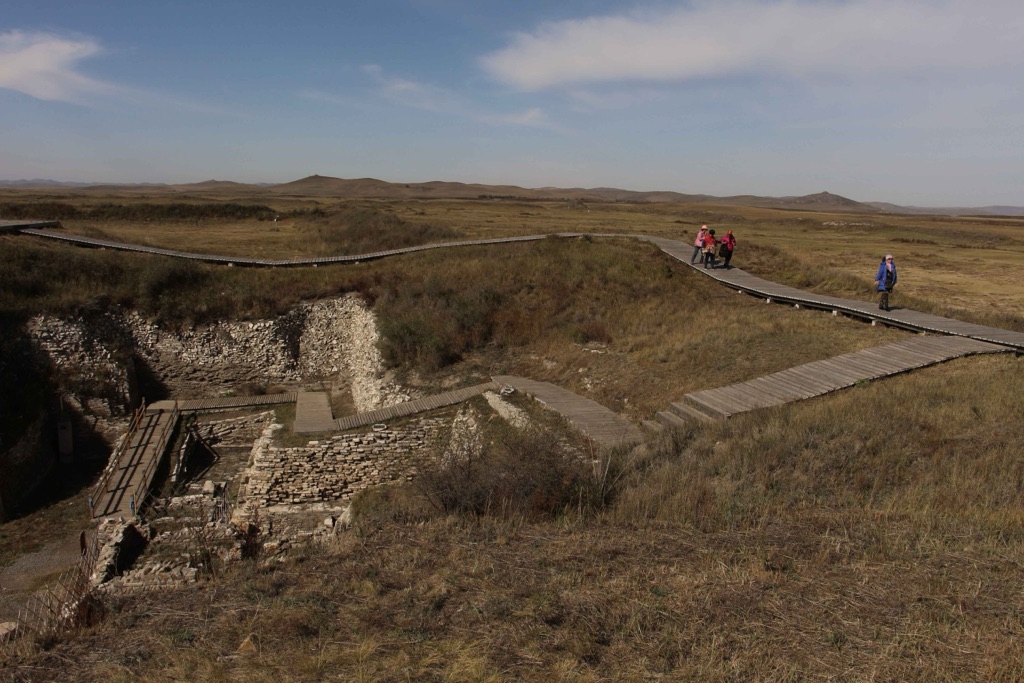The Site of Xanadu, also known as Shangdu, holds a special place in history as the summer capital of Kublai Khan’s Yuan dynasty. It is located in the present-day Inner Mongolia Autonomous Region of China. Marco Polo famously described it in his travels, and it has since become synonymous with opulence and mystery. The site was a grand imperial city that blended Mongolian and Han Chinese cultural elements. It was built by Kublai Khan in 1256 and served as a key location for administration and pleasure until its decline in the 14th century. Today, it is recognized as a UNESCO World Heritage site, offering invaluable insights into Mongolian culture and the Yuan dynasty’s history.
Get your dose of History via Email
Historical Background of Site of Xanadu
The Site of Xanadu was discovered by archaeological efforts in the 20th century. Its ruins were identified based on historical records and Marco Polo’s accounts. Kublai Khan, the grandson of Genghis Khan, established Xanadu in 1256. It was a symbol of the Mongol Empire’s power and cultural diversity. The city was designed by the Chinese architect Liu Bingzhong and was a fusion of Mongolian and Chinese influences.
After Kublai Khan’s death, Xanadu continued to be inhabited by his successors. However, it started to decline in importance. The city was the scene of significant historical events, including grand assemblies of the Mongol court. It was also a place where policies affecting the vast empire were formulated. Xanadu eventually fell into disrepair and was abandoned after the fall of the Yuan dynasty.
The site was rediscovered and excavated in the 20th century. These excavations have provided a wealth of information about the layout and life in the city. The ruins of Xanadu reveal a complex city plan with palaces, temples, and other structures. The city was strategically located at the intersection of trade routes, which facilitated its economic and cultural significance.
Despite its decline, Xanadu’s legacy lived on through literature and art. It became a symbol of an idealized utopia, largely due to the romanticized descriptions by Marco Polo and the poem “Kubla Khan” by Samuel Taylor Coleridge. The site’s historical importance is undeniable, as it represents the power and cultural achievements of the Mongol Empire during its zenith.
Today, the Site of Xanadu stands as a testament to the Yuan dynasty’s grandeur. It attracts scholars and tourists alike, who are eager to learn about its history and marvel at its past splendors. The site’s preservation and study continue to contribute to our understanding of Mongolian history and the broader context of Eurasian cultural exchanges during the medieval period.
About Site of Xanadu
The Site of Xanadu was a masterful blend of Mongolian and Chinese architectural styles. It covered an area of 25,000 hectares. The city was surrounded by a wall with six gates, which allowed access to different sections of the city. The layout was planned according to traditional Chinese feng shui principles, which aimed to harmonize the built environment with nature.
The imperial complex at the heart of Xanadu was a marvel of construction. It included the imperial palace, audience halls, and temples. The materials used for construction were locally sourced and included timber, earth, and stone. The buildings were adorned with intricate carvings and decorations that reflected the cultural amalgamation of the Yuan dynasty.
One of the architectural highlights of Xanadu was the “Great Khan’s Palace.” It was a massive structure that served as the nucleus of the city. The palace was designed to impress visitors and reflect the might of the Mongol Empire. It was here that Kublai Khan held court and managed the affairs of his empire during the summer months.
Beyond the imperial complex, Xanadu also had residential areas, markets, and parks. The city was designed to be self-sufficient, with agricultural fields and water systems that supported its population. The ruins of Xanadu show a sophisticated urban planning that catered to both the needs of the empire and the leisure of its ruler.
The construction methods of Xanadu were advanced for their time. The city’s design incorporated elements that allowed it to withstand the harsh climate of the region. The use of rammed earth for walls and the strategic placement of buildings to maximize sunlight are examples of the ingenuity of its builders. The Site of Xanadu stands as a remarkable example of medieval city planning and architecture.
Theories and Interpretations
Several theories have emerged about the Site of Xanadu’s purpose and significance. Historians believe it was not only a political center but also a cultural and economic hub. The city’s design reflects a deliberate attempt to blend different cultural elements, which suggests a policy of inclusivity and integration under Kublai Khan’s rule.
There are mysteries surrounding Xanadu, particularly regarding its sudden abandonment. Some theories suggest that climate change and political instability led to its decline. Others believe that the shift of trade routes diminished its economic importance, leading to its eventual desertion.
The interpretation of Xanadu’s ruins has been guided by historical records and archaeological findings. The city’s layout has been matched to descriptions in texts such as Marco Polo’s travelogue. This has helped to confirm the accuracy of his accounts and provided a clearer picture of life during the Yuan dynasty.
Dating of the Site of Xanadu has been carried out using various methods, including radiocarbon dating and stratigraphy. These techniques have helped to establish a timeline for the construction, zenith, and decline of the city. The findings have been crucial in understanding the broader historical context of the Mongol Empire’s expansion and its interactions with other cultures.
The Site of Xanadu continues to be a subject of research and interpretation. Each discovery adds a piece to the puzzle of the Mongol Empire’s history. The site’s complexity and historical significance make it a fascinating subject for scholars and history enthusiasts alike.
At a glance
- Country: China
- Civilization: Yuan dynasty (Mongol Empire)
- Age: Founded in 1256 AD

